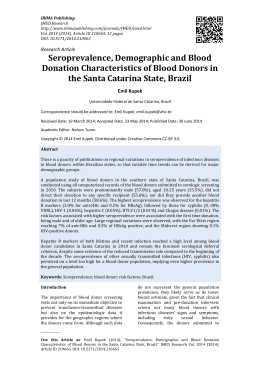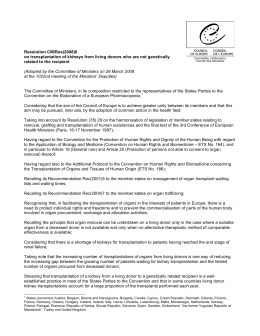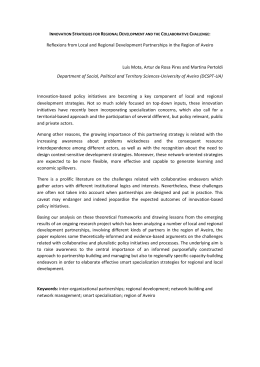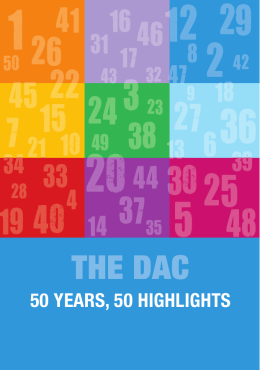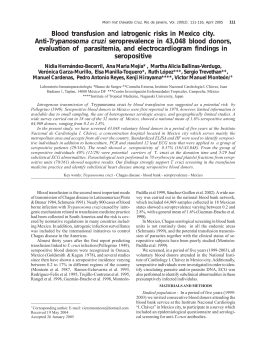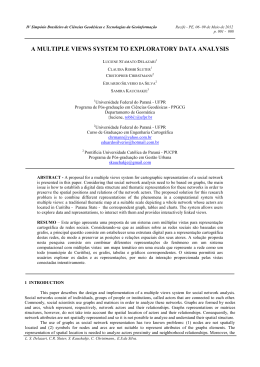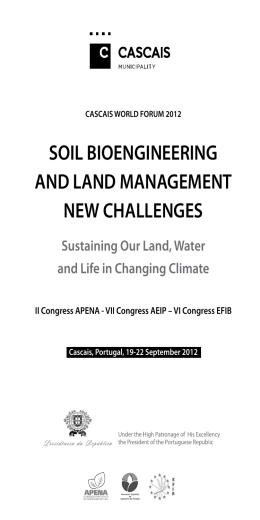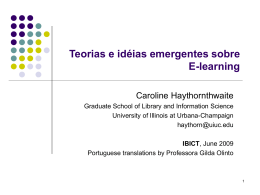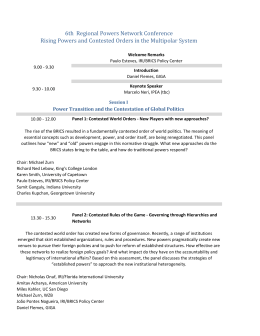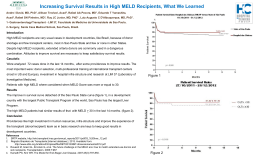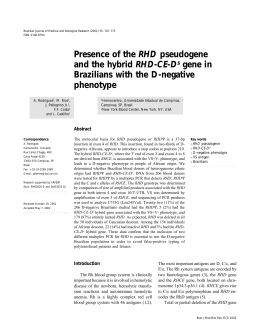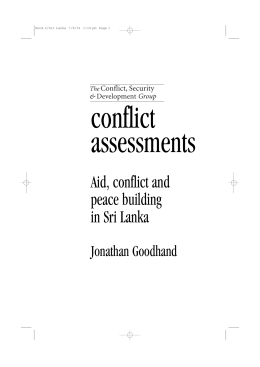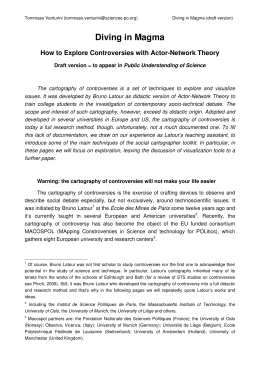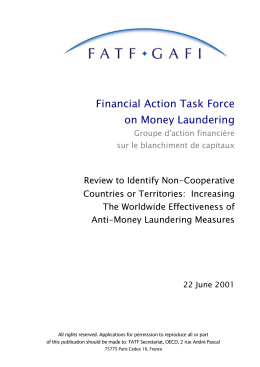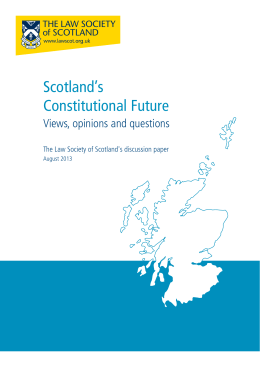November 2012 NOREF Book R evi ew From Recipients to Donors: Emerging Powers and the Changing Development Landscape By Emma Mawdsley (London: Zed Books, 2012) Reviewed by Patricia Magalhães Ferreira Executive summary This book is not only an overarching and well-grounded analysis of the history, institutional aspects, discourse, modalities and practices of the so-called “new” providers of development co-operation, but it also extends the subject by providing us with a fundamental contextualisation of these “emerging” donors in the global geographies of power and wealth. One of the main criticisms presented in the book is that most issues involving aid and official development assistance are still treated by traditional development actors as technical and operational problems, when they are in fact political and strategic matters that relate to interests and power. The author demonstrates how the rising powers are increasingly important drivers of development theory and practice, leading to alternative conceptualisations of development co-operation or, as some experts describe it, to a “post-aid world”. This means that dichotomies like North/South or donor/recipient are becoming outdated and being questioned by diverse actors and processes that go well beyond aid. In this context of complex dynamics, the diversity of non-DAC donors is often underestimated (with China in the spotlight) and the DAC/non-DAC divide falls short in explaining most of the current changes under way. The reviewer Patrícia Magalhães Ferreira is currently a researcher at the Valle Flor Institute in Lisbon and has collaborated for more than a decade with the Institute for Strategic and International Studies. She has published on fragile states and development co-operation, EU-Africa issues and aid effectiveness. She has also worked as a consultant on development co-operation and evaluation in Africa. Book review: From Recipients to Donors: Emerging Powers and the Changing Development Landscape Much has been written in the last few years about the rise of “new actors” in the development aid landscape, presenting opportunities and risks for partner countries (particularly in Africa), while impacting and challenging the traditional global aid architecture, which thus far has mainly been framed by Western perceptions, strategies and practices. One should take into account, however, that this is still a very recent subject of analysis in both the academic and political arenas and that, compared to the enormous amount of research into various elements of foreign aid from the industrialised economies, there is still much to learn about the presence, activities and importance of development co-operation policies not included in the framework of the Development Assistance Committee (DAC) of the Organisation for Economic Co-operation and Development. In the introduction to From Recipients to Donors: Emerging Powers and the Changing Development Landscape, the author, Emma Mawdsley, states that the book is about the emergence or re-emergence of a large number of states that are active as partners and donors in international development. In fact, the book is not only an overarching and well-grounded analysis of the history, institutional aspects, discourse, modalities and practices of these “new” providers of development co-operation, but also takes the research further, providing us with a fundamental contextualisation of these actors in the global geographies of power and wealth. It points out how aid is a relatively small element interlinked with wider trends in political and economic power, but simultaneously illustrates how development co-operation patterns (approached in a broader sense than just foreign aid) are playing a role in the redefinition of institutional settings, in the overall relationship between developing countries and in boosting a stronger voice for recipient countries within this new configuration. As Mawdsley rightly points out, however, this does not mean that the inclusion of large emerging economies in multilateral forums and new decision-making frameworks such as the G-20 ensures that the interests of the majority of poorer countries are somehow assured. The book contributes to the deconstruction of several concepts that still frame most of the discourse and debates on the rise of new providers -2- of development co-operation in the global aid architecture. In effect, the terminology of “new” or “emerging” actors sometimes refers to countries that have a long history of engagement in Africa and other developing countries. The book’s title is itself questioned through the text, since most of these countries have not made a clear transition from recipients to donors, but rather have become simultaneously donors and recipients of development aid. In addition, middle-income countries also host the majority of the world’s poor, with implications for how poverty is understood and addressed. Conceptual dichotomies like North/South, developed/underdeveloped, or donor/recipient are therefore becoming outdated and being questioned by diverse types of actors and by processes that go well beyond aid. Being marked by the rising presence of China in Africa and critical though China’s role is and will be, many existing studies (produced mainly with a Western focus, in terms of both theory and analysis) tend to standardise a complex, diverse and highly differentiated set of actors into a unified strategy or approach conducted by emerging economies and led by China. Mawdsley offers instead a clear reminder that the so-called group of emerging players includes global giants, regional powers, rapidly industrialised economies and former socialist states from diverse geographic and historical backgrounds that are neither a homogeneous group in terms of their interests and capacities nor share a unique agenda. Going beyond China is, therefore, fundamental to understanding the tensions and shifts taking place within aid and development co-operation worldwide, pointing to plural and heterogeneous impacts for different sectors and social groups within and across different countries and contexts. The DAC/non-DAC divide falls short in explaining most of the current changes and often oversimplifies more complex dynamics. For instance, China shares many practices and approaches with other Asian donors, such as India and Korea, that are fundamentally different from the approaches, agendas and experiences of other “new donors” such as the Gulf States, or Latin American donors such as Brazil. The differences among non-DAC donors are critically portrayed throughout the various chapters, combining the analysis with an historical perspective that allows Book review: From Recipients to Donors: Emerging Powers and the Changing Development Landscape for a broader view when trying to understand the motivations and objectives underlying the discursive claims, policies, strategies, institutional settings and practices of (re-)emerging donors. Rhetoric and symbolic discourse are indeed powerful tools, which re-emerging Southern development partners are pushing strongly to fulfil their objectives as rising powers, including in the field of development co-operation. South-South co-operation, including concepts such as “non-interference in domestic affairs”, “win-win relationships” or “mutual benefits”, entail a set of new language, concepts and developmental principles. And although the definitions, volumes and institutions of development co-operation are highly varied among these (re-)emerging donors, Mawdsley points out some common features of these actors, including a sense of dynamism, of change and opportunity, of flexibility and speed in decision-making and the implementation of projects, and a general tendency to focus on the more productive sectors of the economy and on infrastructure, which tends to generate more direct and immediate benefits for both partners and donors. The author makes no judgements about the quality or effectiveness of the aid provided, but rather argues for an equally critical stance towards the re-emerging donors and development patterns as that towards traditional donors, asking whose interests (class based, sectoral or others) are being served within both donor and recipient countries. Just as with DAC donors, the geopolitical and commercial interests driving nonDAC assistance may cause concern or conflict among interest groups within recipient countries, which is a subject that would require further research. Non-DAC donors are engaged in an enormous range of activities, many of which are very similar to those of the “traditional” DAC donors. However, Mawdsley stresses two distinctive aspects in this regard. One is the rejection of political conditionalities among some non-DAC donors, although this does not mean an absence of negotiations or a lack of concern with polity or governance issues. The other is the conceptual and practical overlaps among aid (as defined by DAC criteria), trade and investment, blurring these distinctions either by using tied aid or by blending multiple instruments (e.g. presenting development-oriented and commercial instruments as a package to support a project or bilateral agreement, or offering loans as part of a “foreign aid” portfolio, but not conforming to DAC definitions and norms). These issues are more complex than the division between DAC and nonDAC donors suggests: some of the latter do not traditionally use tied aid (e.g. Arab states) and in practice many of the former do not separate official development assistance from other official flows and other investment and business interests. In fact, this increased openness to several flows and instruments of development financing is becoming more attractive and interesting to traditional donors, as their national aid budgets come under increasing pressure following the global financial crisis. These complex dynamics have clear implications for how the flows, institutional relations and governance of aid are perceived and organised in the global context, since development cooperation is in a rapidly evolving “state of change”, both in theoretical and practical terms. Mawdsley identifies several global factors that have a powerful bearing on future trends and debates, such as changes in the international landscape in the new millennium, including changing neoliberal orthodoxies, the new aid paradigm or the global financial crisis. But the book focuses mainly on an element that is often omitted in analysis, i.e. how the rising powers are increasingly important drivers of development theory and practice, leading to alternative conceptualisations of development co-operation or – as some experts describe it – to a “post-aid world”. One of the main critiques made in this book is that most issues involving aid are still treated by traditional development actors as technical and operational problems rather than political and strategic matters that relate to interests and power. Mawdsley argues that, regardless of the international relations theory in terms of which we analyse foreign aid (realism, liberal internationalism, constructivist, world system theory, etc.), all of these theoretical approaches share the recognition that aid is inherently political in its nature, dynamics and practices. This means that, regardless of its main objectives – poverty -3- Book review: From Recipients to Donors: Emerging Powers and the Changing Development Landscape reduction, economic growth and sustainable development – aid is subject to the same strategic calculations that are made in other policy areas. The Paris commitments on aid effectiveness and the pursuit of policy coherence for development touch sensitive issues regarding donors’ visibility, conflicting interests, ideological hurdles, willingness to give up leadership to partner countries, etc. They therefore require political rather than technical solutions, and can only have mixed results when treated as bureaucratic and depoliticised issues. The global partnership focusing on development (rather than aid) effectiveness signed at Busan seems to go a step further in recognising the power and political issues involved, as well as reflecting the need to review and restructure the so-called “North-South dialogue”. -4- This new development agenda refocuses attention on economic growth as an essential condition for poverty reduction, elevates the potential role of the private sector and shows a new openness to development financing, with aid being conceptualised more as a catalyst of development outcomes (among other flows) than as a direct or isolated instrument of development in itself. While this new “development effectiveness” agenda may ultimately descend into a commercial and geopolitical race or be absorbed by the economic growth model, the fact is that all these new dynamics seem to reflect the emergence of a new global development governance regime, with increased multipolarity, diversity and inclusiveness (in terms of networks, norms and approaches). How international regimes and institutions will adapt to the current power transitions is still to be seen, but transformation is inevitable and is already under way.
Download
